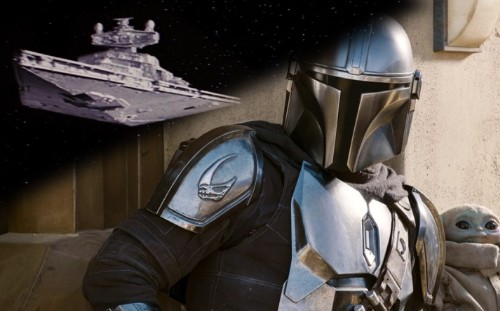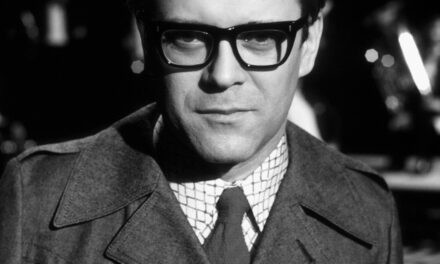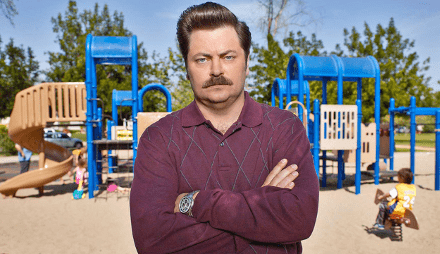The circle is now complete.
George Lucas has acknowledged inspiration for his original Star Wars: A New Hope from a galaxy of sources, including but not limited to: Joseph Campbell’s comparative mythology book The Hero with a Thousand Faces (the hero’s journey); Isaac Asimov’s Foundation Trilogy (a galaxy-wide empire); Frank Herbert’s Dune (and its desert planet, Arrakis); Jin Yong’s wuxia novel, The Return of the Condor Heroes (robed, code-minded warrior heroes); and much of the elements within sci-fi writer E.E. Doc Smith’s stories.
Yet it’s the influence of the Buck Rogers and Flash Gordon movie house serials of the 1930s that provide the visual and storytelling spacetime fabric to Star Wars. In fact, it was when George Lucas was unsuccessful in acquiring the rights to adapt the Flash Gordon serials that he set out to create his own space tale.
From the retreating opening crawl to the iris, clockface-spiraling, and cross-screen scene transition wipes, George Lucas created a thrilling movie experience updated from his youth with the magic of modern cinema’s technology. That he pieced together and built upon story elements from other sources isn’t as essential to the nature of Star Wars storytelling as is the visual and structural narrative itself: the serials.
Each of the original trilogy movies are “episodes.” We follow these exploits of our heroes in serial fashion as they encounter exotic and wondrous landscapes and perils in their singular quest – often with a readiness and taste for adventure.
Accelerate 16 years. The second set of trilogies, or prequels, from Mr. Lucas – indeed because they’re from Mr. Lucas – extended and deepened the mythologies and machinations of the forces of good and evil, Jedi and Sith. These all felt new, yet oddly not the Star Wars we anticipated.
And why not? As George Lucas may have very well asked himself, “Why retread two-decades-old films as a 50-something visionary when you’ve moved beyond the visionary work of your younger 30-something self?”
Unfortunately, the focus on political intrigue and groundbreaking special effects in the prequels took its toll. The standard complaint of these three latter films is that George Lucas delivered effects-laden, this-then-that storytelling with actors removed from both their environments and their emotions. In fact, one could argue that the disconnect goes further: that for all the technical marvel, what’s missing at its heart is the joy of exploration and visual call-backs to those Flash Gordon serials that set Mr. Lucas on his journey in the mid-’70s.

Fig. 2: Inspirational wipe from “Flash Gordon Conquers the Universe (1940) ep01 – The Purple Death“

Fig. 3: Another inspirational wipe from “Flash Gordon Conquers the Universe (1940) ep01 – The Purple Death“
With Disney’s purchase of LucasFilm in 2012, the studio laid in a major course correction to recapture the sense of awe and exhilaration longtime fans had experienced with the original trilogy. Given the reins and burden for the first of the new films, the master of franchise re-booting, J.J. Abrams, came extraordinarily close to threading the needle. He created the thrill and mystery of the original Star Wars while introducing new characters and journeys. And yet. There was that sense of re-treading George Lucas had avoided in the prequels. The Death Star became a Death Planet. The hero with a hidden royal past became, well, a hero with a hidden royal past. As the new trilogy ran its course, the films felt strained by their storytelling, often stooping to lay one fan-service Easter egg after the next, and a plot that seemingly circled back in on itself to justify a coherent, grandiose story. Star Wars was a theatrical spectacle, but overblown, overthought, and overwrought.
The two stand-alone films, Rogue One and Solo, offered a departure from the gravity of the new trilogy, yet did not connect with the swashbuckling purity of Flash Gordon underpinning the core of the original Star Wars.
Which orbits us back to a live-action Star Wars entry filmed and delivered with the exuberance and tightly woven storytelling of those inspirational serials: The Mandalorian.
Where the Disney-era Star Wars trilogy films spiraled into an elaborate magnum opus burdened under its own weight, the Disney+ series has captured exactly what made Star Wars Star Wars. The chapters. The mysticism. The mystery. The pluckiness aside the gravitas. Those glorious wipes.
For those of us overwhelmed in 1977 by the tectonic shift in moviemaking that occurred when the original Star Destroyer passed overhead – or realized, eight minutes and 53 seconds later at the first transition wipe between Darth Vader and Tatooine, that we were in the hands of a storyteller informed by hours of movie house serials – the return to the heart of Star Wars in The Mandalorian is as welcome as a Wookie’s enthusiastic embrace.
The very nature of the streaming platform has, in fact, become the perfect venue for Star Wars; for nowhere else in the galaxy can the serial approach woven into the DNA of Star Wars be explored, expanded upon and exalted. The future of Star Wars in its purest form is a serial.
The circle is now complete.
Larry Siegel is a TV enthusiast and a contributing writer to TVWorthWatching.com where he also produces and directs the daily video hosted by TV critic, David Bianculli, “Best TV Tomorrow.” Viewers can sign up to receive the daily emails for the videos for free here. Larry also owns a U.S.-based marketing firm, MarketingFusion, and has provided marketing services for clients across all industries for over 30 years.








Fascinating read Larry! Way behind on our “Star Wars” watching in this household… Films 8 and 9 still waiting to be viewed and “The Mandalorian” will remain as something of a myth until it arrives on a platform near us. But from what you’ve described here, it sounds like our sort of thing. And *always* good to hear these days that somebody, somewhere is investing in some extra wipes.
All the best
Andrew